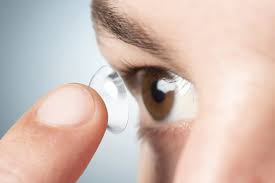Digital health encompasses a broad set of disciplines, tools, platforms and software as well as target audiences. mHealth apps, EHRs and personalized medicine solutions are among the various categories.
Like any new tool, digital health requires careful evaluation. However, it also has great potential to optimize healthcare delivery and clinical trials.
Telemedicine
Digital health technologies offer insight into more patient data, leading to better and faster diagnoses. They also help patients manage their own care, providing them with tools to improve and extend their life at home.
A type of digital health technology is telemedicine, which allows patients and doctors to communicate over the internet or through mobile devices, reducing wait times, travel costs, and other barriers to care. This is particularly important for individuals with complex medical conditions or limited mobility.
Another type of digital health technology is remote patient monitoring (RPM), which involves the collection, reporting and transmission of health-related information and data via telecommunications and electronic communication technologies. These include live video conferencing, smartphone or tablet apps, “store and forward” electronic transmission and remotely-located patient monitoring devices.
RPM devices may monitor a person’s heart rate, blood sugar levels or oxygen saturation, and may even remind people to take their medications. They can also upload food logs and activity tracking, which allows physicians to analyze the collected data.
Other types of digital health technologies include smart home monitoring systems that can control and automate a person’s daily activities, and mHealth wearables or apps that track symptoms such as blood pressure or heart rate. IoT devices are also being used to reduce hospital operating costs by lowering the need for expensive equipment, such as X-ray and CT scanners. They can also reduce the amount of time and money spent on repairing or replacing such equipment, allowing hospitals to invest their budget in other areas.
Wearables
In a healthcare context, wearables refer to devices that are worn on the body and connect to smartphones. These devices typically track physical activities and health-related data, such as heart rate or activity level, while also relaying the information to a medical practitioner on behalf of the user.
Some examples of this technology include smartwatches, fitness trackers and health-related wristbands. The sensors in these devices can vary from traditional digital pedometers that count how many steps you take to biometric sensors that monitor things like your heart rate. They are commonly used by athletes and fitness enthusiasts, but aren’t limited to this specific demographic. For example, some military units use wearable tech that includes virtual reality-based simulation exercises and sustainability technology, like boot inserts that measure how much weight a soldier can carry over terrain.
Healthcare professionals can gain a lot of insight from the data these wearables collect. They can also quickly relay any abnormalities to patients, who can then follow up with doctors to confirm the diagnosis and determine a treatment plan. In addition, these devices can help reduce hospital readmission charges and loss of reimbursements from insurers by detecting health issues in the early stages. Lastly, they can facilitate communications between doctors and patients, minimize the need for personal visits, and enable a more collaborative doctor-patient environment.
Artificial Intelligence
Digital health tools that utilize artificial intelligence can help medical professionals and patients save time, boost accuracy, and create more personalized medicine. In addition to telemedicine, AI-powered systems can also improve treatment for various conditions, such as heart disease and chronic illnesses. They can also help patients track their health-related goals and make better decisions about their own health care.
Some consumer-facing digital health services provide early warnings of risks and diseases, such as the COVID-19 pandemic lockdown where smartphone apps enabled people to systematically trace contacts, or air pollution alerts for those with respiratory illness. Other devices, such as implants and wearables, transmit data that can be monitored remotely to support a person’s daily routine and provide an extra layer of protection.
These innovations meld technologies and combine them in unique ways to address the needs of a range of healthcare stakeholders, including consumers, medical practitioners, and technology developers. Many of these solutions rely on big data sets that contain personal medical information, such as lab test results, MRIs, billing records, prescriptions, and more. This can raise concerns about privacy and security, especially in the case of data breaches that expose sensitive personal information.
Digital health solutions are being developed to address a wide range of challenges that face the health industry, including access and convenience for patients who can use these tools to interact virtually with medical experts rather than going to the hospital. This allows hospitals to focus on their most urgent care and to better allocate staff resources. It can also reduce the burden on medical students and residents to gain experience in a clinical setting.
Big Data
Big data is a new technology that allows the analysis of large amounts of information in order to find useful patterns and trends. In healthcare, this type of analysis can help identify potential risks in patients and improve treatment for diseases. It can also be used to make better decisions in the business world, including managing risk and improving customer service.
Digital health technologies allow medical professionals to track patient outcomes more closely and provide personalized care for patients. These technologies can also be used by consumers to monitor their own health and wellness-related activities. As a result, these tools are becoming increasingly popular. They can also help reduce inefficiencies, costs and increase access to healthcare for all.
The increased use of digital health technologies in healthcare is creating a need for new data formats and storage methods. The influx of data includes personal medical records, radiology and fluoroscopy images, clinical trials, surveys, demographic data, human genomes, sensor technology data, and other new sources. In addition, the data is stored in a variety of systems that use different coding languages. As a result, there are many challenges with data interoperability.
As digital health technologies become more common, they are transforming the way healthcare is delivered. These innovations include telehealth, wearables, and AI. However, it is important to note that these technologies are not without their own problems, including ethical concerns.






More Stories
Easy Healthy Cooking Recipes For Beginners
Quick Dinner Ideas For Two Healthy
Administrative Information Systems in Healthcare